Recent Highlights
Objectives
Research themes
Training opportunities
How to apply
Investigators
Collaborators
Partners
Students
Seminars
Program management
Annual meetings
Contact us
Contact information:
Ms Yella Jovich-Zahirovich
Project Coordinator
Tel. 514-398-7824
Fax. 514-398-7990
Dr. Lyle Whyte
Principal Investigator
Tel. 514-398-7889
Fax. 514-398-7990
Canadian Astrobiology Training Program
CATP Recent Graduate was hired by NASA JPL
 Congratulations to CATP PhD student, Francis Raymond from University of Western Ontario) who is hired as a PDF at NASA JPL. Francis will be working on the MSL Mission. The focus of the research is in autonomous science techniques and computer vision algorithms to support them. This position includes membership in the ChemCam instrument team; Francis will be working Mars Science Laboratory rover operations, doing alternately science activity planning and ChemCam instrument operations.
Congratulations to CATP PhD student, Francis Raymond from University of Western Ontario) who is hired as a PDF at NASA JPL. Francis will be working on the MSL Mission. The focus of the research is in autonomous science techniques and computer vision algorithms to support them. This position includes membership in the ChemCam instrument team; Francis will be working Mars Science Laboratory rover operations, doing alternately science activity planning and ChemCam instrument operations.
CATP PhD student has been awarded 2 major scholarships
 Congratulations to CATP PhD student Tanya Harrison (University of Western Ontario) for winning Vanier Canada Graduate Scholarship and Amelia Earhart Fellowship Program. Well done Tanya!
Congratulations to CATP PhD student Tanya Harrison (University of Western Ontario) for winning Vanier Canada Graduate Scholarship and Amelia Earhart Fellowship Program. Well done Tanya!
Images from CATP research were published on Astronomy Picture of the Day (APOD)
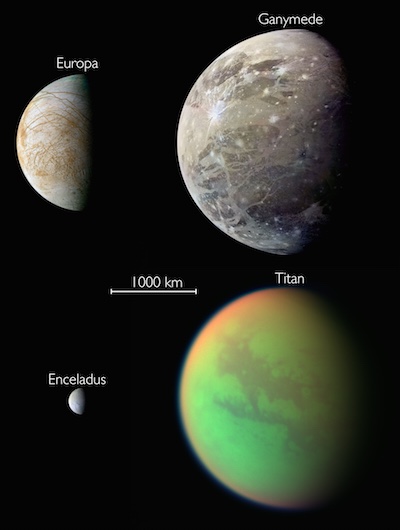 On September 19, 2014 Astronomy Picture of the Day (APOD) featured CATP recent paper on the "Formation, Habitability, and Detection of Extrasolar Moons" by René Heller, PDF from McMaster University. APOD is originated, written, coordinated, and edited since 1995 and it contains the largest collection of annotated astronomical images on the internet. APOD received several accolades during its short existence, including a Scientific American 2001 Sci/Tech Web award.
On September 19, 2014 Astronomy Picture of the Day (APOD) featured CATP recent paper on the "Formation, Habitability, and Detection of Extrasolar Moons" by René Heller, PDF from McMaster University. APOD is originated, written, coordinated, and edited since 1995 and it contains the largest collection of annotated astronomical images on the internet. APOD received several accolades during its short existence, including a Scientific American 2001 Sci/Tech Web award.
APOD link here: : http://apod.nasa.gov/apod/ap140919.html
Full article here: http://online.liebertpub.com/doi/abs/10.1089/ast.2014.1147
CATP research was featured on the Science front page
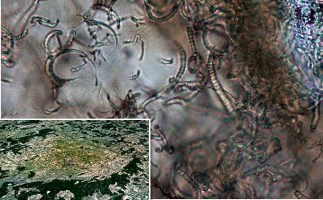 Congratulations to CATP PDF Dr. Haley Sapers whose paper was featured in a news article in Science Magazine entitled "Meteorite Impacts Could Have Fostered Life on Early Earth". This paper has been published in the prestigious journal, Geology. In this paper, Dr. Sapers describes for the first time, "the first putative microbial trace fossils hosted in meteorite impact glass". As she notes in the abstract "as impact glass is a ubiquitous substrate on rocky bodies throughout the Solar System and likely common on the early Earth, the preservation of biological activity in impact glass has significant astrobiological implications for life on early Earth as well as for the search for life on other planets."
Congratulations to CATP PDF Dr. Haley Sapers whose paper was featured in a news article in Science Magazine entitled "Meteorite Impacts Could Have Fostered Life on Early Earth". This paper has been published in the prestigious journal, Geology. In this paper, Dr. Sapers describes for the first time, "the first putative microbial trace fossils hosted in meteorite impact glass". As she notes in the abstract "as impact glass is a ubiquitous substrate on rocky bodies throughout the Solar System and likely common on the early Earth, the preservation of biological activity in impact glass has significant astrobiological implications for life on early Earth as well as for the search for life on other planets."
Science article here: http://news.sciencemag.org/biology/2014/04/scienceshot-meteorite-impacts-could-have-fostered-life-early-earth
Full article here: http://geology.geoscienceworld.org/content/early/2014/04/08/G35293.1.full.pdf+html
CATP PDF René Heller talked on NPR radio and on CBC Science and Technology show – Quirks and Quarks about his new research: Extrasolar Superhabitable worlds
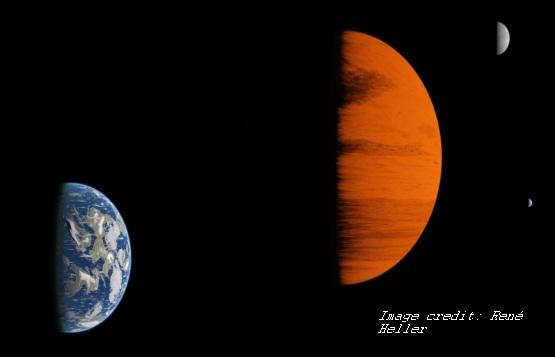 Earth-like planets outside the Solar System may not be the best places to search for extrasolar life, a new study by René Heller (CATP postdoc at McMaster University)
and his colleague John Armstrong suggests. While current hunts for habitable exoplanets, such as those conducted with NASA's Kepler space telescope, focus on Earth-like planets, terrestrial planets about 2 to 3 times the mass of Earth should be more common places for life, Heller and Armstrong propose. These planets have relatively larger internal heat reservoirs that allow long-lasting plate tectonics, which are required to sustain the so-called carbon-silicate cycle. What is more, they shall have thicker atmospheres, more stable climate thermostats, and a more reliable magnetic shield against cosmic high-energy radiation than Earth has. Finally, these so-called "Superhabitable Worlds" are supposed to orbit K dwarf stars, a family of stars somewhat less massive than the Sun, because these stars can have substantially longer lifetimes than the Sun, allowing their planets for more time to actually start their own genesis.
Earth-like planets outside the Solar System may not be the best places to search for extrasolar life, a new study by René Heller (CATP postdoc at McMaster University)
and his colleague John Armstrong suggests. While current hunts for habitable exoplanets, such as those conducted with NASA's Kepler space telescope, focus on Earth-like planets, terrestrial planets about 2 to 3 times the mass of Earth should be more common places for life, Heller and Armstrong propose. These planets have relatively larger internal heat reservoirs that allow long-lasting plate tectonics, which are required to sustain the so-called carbon-silicate cycle. What is more, they shall have thicker atmospheres, more stable climate thermostats, and a more reliable magnetic shield against cosmic high-energy radiation than Earth has. Finally, these so-called "Superhabitable Worlds" are supposed to orbit K dwarf stars, a family of stars somewhat less massive than the Sun, because these stars can have substantially longer lifetimes than the Sun, allowing their planets for more time to actually start their own genesis.
Full NPR interview here: http://www.npr.org/blogs/thetwo-way/2014/01/16/263106030/in-search-for-habitable-planets-why-stop-at-earth-like
Full Quirks and Quarks interview here: http://www.cbc.ca/video/news/audioplayer.html?clipid=2440796202This research has been published in the 2014 January issue of Astrobiology.
Full article here:
http://online.liebertpub.com/doi/abs/10.1089/ast.2013.1088
Two CATP Investigators talked about their recent big discoveries on CBC Science and Technology show - Quirks and Quarks
Sunday, May 18, 2013
Oldest water May Be Clue To Life On Mars with Dr. Barbara Sherwood Lollar:
http://www.cbc.ca/quirks/episode/
Water found in an isolated reservoir in a mine near Timmins, Ontario may be the oldest on Earth. It may also provide a clue to the existence of life on Mars. New research by Dr. Barbara Sherwood Lollar, a Geoscientist in the Department of Earth Sciences at the University of Toronto, found the water bubbling out of fractures in the rock, over two kilometres deep in the mine. The 2.6 billion-year-old water is rich in dissolved gases, including hydrogen and methane. As well, there is evidence of the noble gases helium, zenon, neon and argon. This water is similar in composition to water known to support life near hydrothermal vents in the ocean. It is therefore believed that microscopic life may also exist in this ancient water. Because the rocks are similar in age and geology to some rocks on Mars, it is also thought that similar life may be also be found on that planet.
Sunday, May 25, 2013
Arctic Bacteria Survives Below Freezing with Dr. Nadia Mykytczuk:
http://www.cbc.ca/quirks/episode/
Dr Nadia Mykytczuk and her research team at McGill University have discovered Canada's newest cold weather champion - a bacteria that can reproduce at temperatures as cold as -15°C. That's the lowest temperatures at which anyone's seen bacteria reproduce. Not only can this bacterium grow in such low temperatures, it can also thrive at room temperature. Dr Mykytczuk (who is now at Laurentian University in Sudbury) says it's rare for an extremophile to be so adaptable to different environments. This bacterium can handle both high and low temperatures because it has two copies of many of its genes - one copy adapted to cold weather, and one copy to warmer temperatures. She thinks understanding this bacterium will give scientists clues on where to look for life on other planets.
CATP research featured as Editor’s Choice in Science
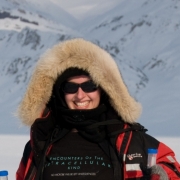
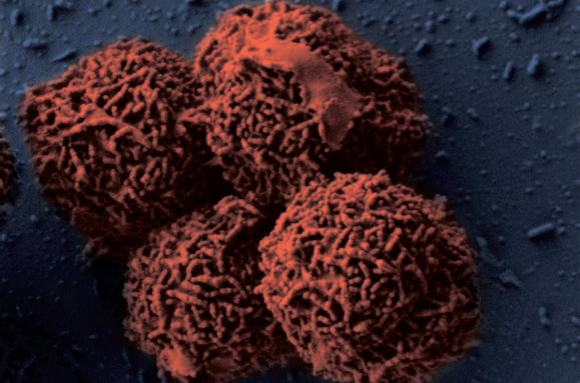 Nadia Mykytczuk’s (CATP PDF) recent paper: “Bacterial growth at -15°C; molecular insights from the permafrost bacterium Planococcus halocryophilus Or1" published in The ISME (International Society for Microbial Ecology) journal, was featured as Editor’s choice in Science. Through her research Mykytczuk et al. discovered a bacterium that is able to thrive at –15°C, the coldest temperature ever reported for bacterial growth. The bacterium offers clues about some of the necessary preconditions for microbial life on both the Saturn moon Enceladus and Mars, where similar briny subzero conditions are thought to exist.
Nadia Mykytczuk’s (CATP PDF) recent paper: “Bacterial growth at -15°C; molecular insights from the permafrost bacterium Planococcus halocryophilus Or1" published in The ISME (International Society for Microbial Ecology) journal, was featured as Editor’s choice in Science. Through her research Mykytczuk et al. discovered a bacterium that is able to thrive at –15°C, the coldest temperature ever reported for bacterial growth. The bacterium offers clues about some of the necessary preconditions for microbial life on both the Saturn moon Enceladus and Mars, where similar briny subzero conditions are thought to exist.
Full article here: http://www.nature.com/ismej/journal/v7/n6/full/ismej20138a.html
Science article here: http://www.sciencemag.org/content/339/6123/twil.full#compilation-1-5-article-title-1
CATP Investigators discovered world’s oldest flowing water
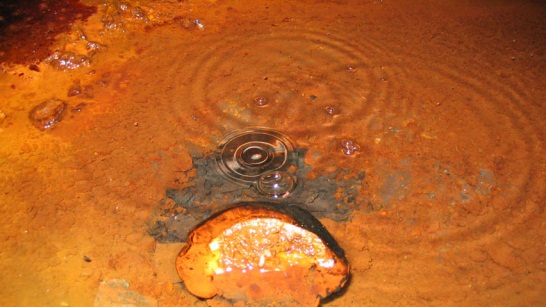 A team of scientists from the University of Toronto and Manchester University in the United Kingdom have gone three kilometers beneath the surface of the Canadian Shield to find some of the oldest fluids in our planet’s history. The waters are rich in clues about lives lived without sunlight on Earth and possibly on Mars. The Canadian team members include co-principal investigator Dr. Barbara Sherwood Lollar (CATP Investigator), CATP PDF Long Li and Dr. Greg Slater (CATP Investigator), from McMaster University. Their discovery is published in the May 16 issue of Nature.
A team of scientists from the University of Toronto and Manchester University in the United Kingdom have gone three kilometers beneath the surface of the Canadian Shield to find some of the oldest fluids in our planet’s history. The waters are rich in clues about lives lived without sunlight on Earth and possibly on Mars. The Canadian team members include co-principal investigator Dr. Barbara Sherwood Lollar (CATP Investigator), CATP PDF Long Li and Dr. Greg Slater (CATP Investigator), from McMaster University. Their discovery is published in the May 16 issue of Nature.
University of Toronto press release article here: http://www.news.utoronto.ca/billions-year-old-sparkling-water
CATP PhD student has been named the winner of the prestigious J.S. Plaskett Medal
 Congratulations to CATP PhD student Yasuhiro Hasegawa from McMaster University who received the J.S. Plaskett Medal, awarded annually by the Canadian Astronomical Society and the Royal Astronomical Society of Canada. The Plaskett Medal is given to the PhD graduate from a Canadian university who is judged to have the most outstanding doctoral thesis in astronomy or astrophysics. Hasegawa’s thesis, entitled “Planet Traps in Protoplanetary Disk and the Formation and Evolution of Planetary Systems” was carried out under the supervision of Ralph Pudritz, director of McMaster’s Origins Institute. Hasegawa is currently a fellow with the East Asian Core Observatories Association at the Academia Sinica Institute of Astronomy and Astrophysics in Taiwan.
Congratulations to CATP PhD student Yasuhiro Hasegawa from McMaster University who received the J.S. Plaskett Medal, awarded annually by the Canadian Astronomical Society and the Royal Astronomical Society of Canada. The Plaskett Medal is given to the PhD graduate from a Canadian university who is judged to have the most outstanding doctoral thesis in astronomy or astrophysics. Hasegawa’s thesis, entitled “Planet Traps in Protoplanetary Disk and the Formation and Evolution of Planetary Systems” was carried out under the supervision of Ralph Pudritz, director of McMaster’s Origins Institute. Hasegawa is currently a fellow with the East Asian Core Observatories Association at the Academia Sinica Institute of Astronomy and Astrophysics in Taiwan.
CATP students take a lead in organizing the 10th annual Astrobiology Graduate Conference (AbGradCon)
AbGradCon 2013, Call for Abstracts
 The 10th annual Astrobiology Graduate Conference (AbGradCon), an interdisciplinary conference organized by and for graduate students and early career scientists, will be held in Montreal, CANADA, June 10th – 14th, 2013. Pre- and early-career scientists (astronomers, biologists, chemists, educators, engineers, geologists, planetary scientists and social scientists) whose research addresses a topic relevant to astrobiology are encouraged to submit for oral and/or poster presentations. Abstract submission for AbGradCon 2013 opens February 1, 2013 and closes March 15, 2013. Please visit www.abgradcon.org for more information.
The 10th annual Astrobiology Graduate Conference (AbGradCon), an interdisciplinary conference organized by and for graduate students and early career scientists, will be held in Montreal, CANADA, June 10th – 14th, 2013. Pre- and early-career scientists (astronomers, biologists, chemists, educators, engineers, geologists, planetary scientists and social scientists) whose research addresses a topic relevant to astrobiology are encouraged to submit for oral and/or poster presentations. Abstract submission for AbGradCon 2013 opens February 1, 2013 and closes March 15, 2013. Please visit www.abgradcon.org for more information.
CATP PDF receives a grant from NASA's Mars Fundamental Research Program (MFRP)
 The Mars Fundamental Research Program (MFRP) was seeking to sponsor the best and most innovative scientific research concerning atmospheric, climatological, geologic, geophysical, and geochemical processes on Mars. CATP PDF, Pablo Sobron was selected for this grant and he will lead an interdisciplinary team of researchers in an investigation into the dynamics and the emission spectroscopy of laser-induced plasmas generated in LIBS measurements on Mars.
The Mars Fundamental Research Program (MFRP) was seeking to sponsor the best and most innovative scientific research concerning atmospheric, climatological, geologic, geophysical, and geochemical processes on Mars. CATP PDF, Pablo Sobron was selected for this grant and he will lead an interdisciplinary team of researchers in an investigation into the dynamics and the emission spectroscopy of laser-induced plasmas generated in LIBS measurements on Mars.
Congratulations to Pablo!
CATP investigator receives the Geological Society of America Geobiology and Geomicrobiology Division Award for 2012
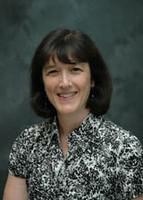 Congratulations to CATP investigator Dr. Barbara Sherwood Lollar from University of Toronto who received the Geological Society of America Geobiology and Geomicrobiology Division Award for 2012 at the GSA Annual Meeting, November 2012.
Congratulations to CATP investigator Dr. Barbara Sherwood Lollar from University of Toronto who received the Geological Society of America Geobiology and Geomicrobiology Division Award for 2012 at the GSA Annual Meeting, November 2012.
Western researcher hops ride to Red Planet
 John Moores, (CATP PDF from University of Western Ontario) is contributing to NASA’s Mars Science Laboratory mission, once Curiosity, the most sophisticated rover to date, lands on the Red Planet in August 2012. NASA selected Moores as one of 29 participating scientists for the mission. In eight months’ time, he will be working at mission control, contributing to the interpretation of Curiosity’s observations.
John Moores, (CATP PDF from University of Western Ontario) is contributing to NASA’s Mars Science Laboratory mission, once Curiosity, the most sophisticated rover to date, lands on the Red Planet in August 2012. NASA selected Moores as one of 29 participating scientists for the mission. In eight months’ time, he will be working at mission control, contributing to the interpretation of Curiosity’s observations.
University of Western Ontario professor Gordon Osinski, Moores’ supervisor, is a CATP Co-Investigator.
Raymond Francis, a PhD fellow with the CATP, will be on Moores’ team, looking at Curiosity’s findings.
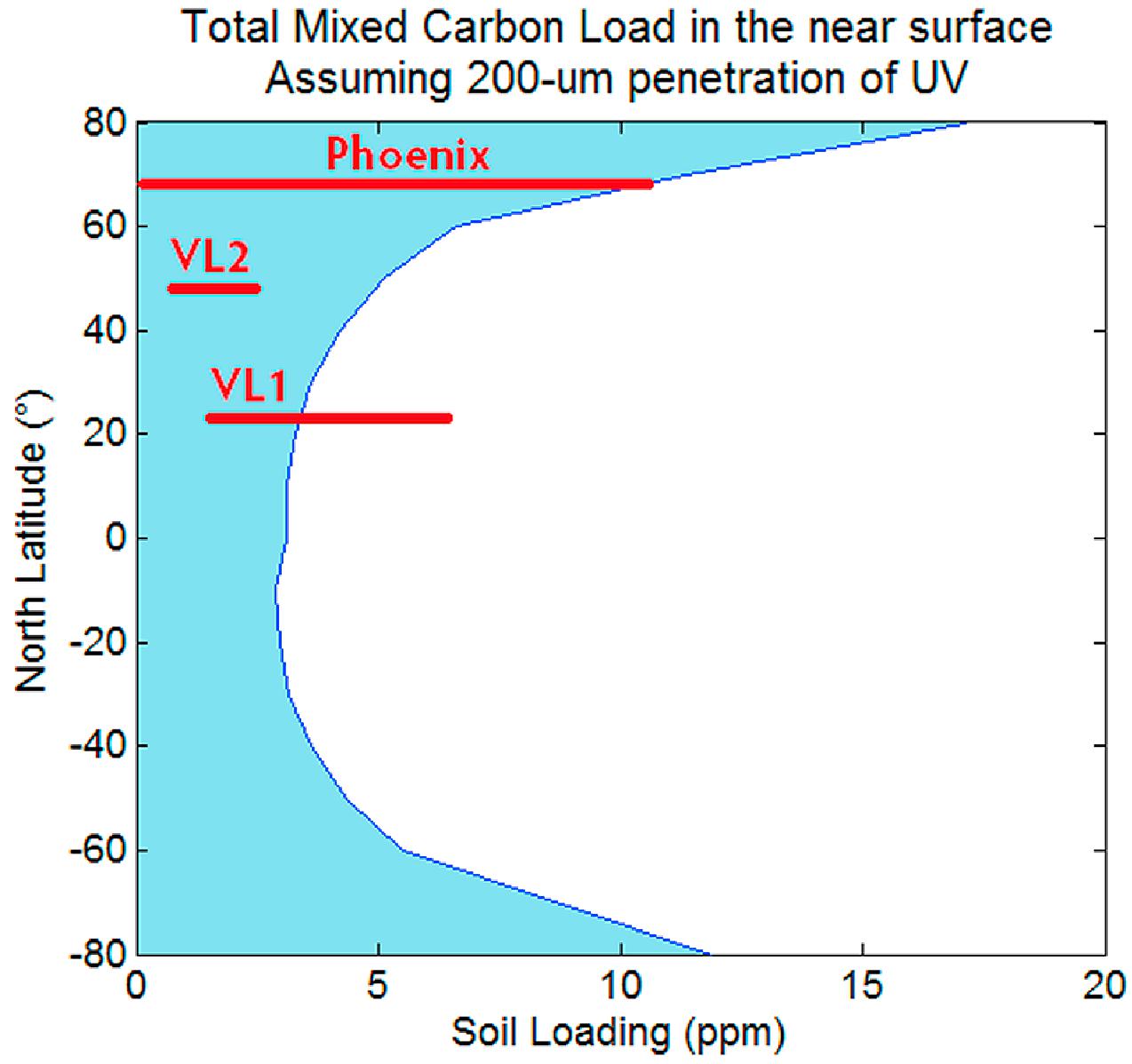 CATP research referred in Science:
CATP research referred in Science:
John Moore's recent paper: “UV degradation of accreted organics on Mars: IDP longevity, surface reservoir of organics, and relevance to the detection of methane in the atmosphere” published in Journal of Geophysical Research, was referred in a new Focus article in Science, In the Hunt for the Red Planet's Dirtiest Secret, 31 August 2012: Vol. 337 no. 6098 pp. 1032-1033.
Congratulations to John!!!
http://www.agu.org/pubs/crossref/2012/2012JE004060.shtml
http://www.sciencemag.org/content/337/6098/1032.full
CATP Highly Qualified Personnel (HQP) faculty positions
Congratulations to:
- Long Li (CATP PDF from University of Toronto) started a faculty position (tenure-track assistant professor) at University of Alberta on September 1, 2012.
- John Moores (CATP PDF from University of Western Ontario) starting a faculty position at York University in December 2012.
 CATP Investigator, Dr. Ed Cloutis from University of Winnipeg is participating in the Mars Science Laboratory mission (Curiosity). He is a Collaborator to a Participating Scientist on the mission (Jeff Johnson from Johns Hopkins University).
CATP Investigator, Dr. Ed Cloutis from University of Winnipeg is participating in the Mars Science Laboratory mission (Curiosity). He is a Collaborator to a Participating Scientist on the mission (Jeff Johnson from Johns Hopkins University).
CATP PhD student wins CASCA award for best student journal paper of the year
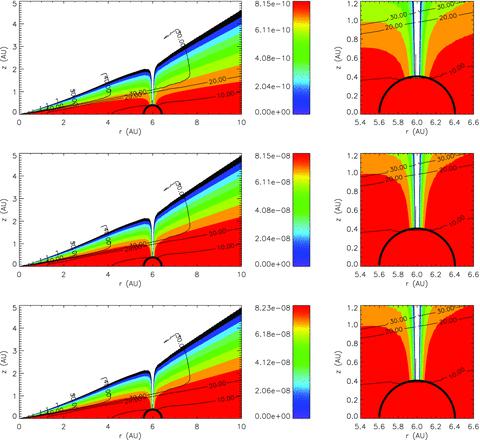 Yasuhiro Hasegawa (CATP PhD student at McMaster University) was awarded by Canadian Astronomical Society Board (CASCA) with the Scholarship for Best Student Journal Paper. The scholarship, which carries a value of $1000, recognizes excellence in published research led by students. Yasuhiro is a student of McMaster University and is supervised by Dr Ralph Pudritz, CATP Investigator.
Yasuhiro Hasegawa (CATP PhD student at McMaster University) was awarded by Canadian Astronomical Society Board (CASCA) with the Scholarship for Best Student Journal Paper. The scholarship, which carries a value of $1000, recognizes excellence in published research led by students. Yasuhiro is a student of McMaster University and is supervised by Dr Ralph Pudritz, CATP Investigator.
Full article here:
http://onlinelibrary.wiley.com/doi/10.1111/j.1365-2966.2010.18135.x/full
CATP PhD student wins prestigious Postdoctoral Fellowship
Yasuhiro Hasegawa (CATP PhD student at McMaster University) won the East Asian Core Observatories Association (EACOA) fellowship (3years award, renewable to 5 years - the "Asian Hubble award"). The East Asian Core Observatories Association has just opened this prestigious new program and Yasuhiro is among their first recruits. He is actively pursuing research on planet formation and migration, and in developing research on origin of terrestrial planets.
CATP undergrad summer student wins first prize for his talk at the annual Canadian University Physics conference (CUPC)
Darren Fernandes (CATP undergrad summer student at McMaster University) wins first prize for the Astronomy and Astrophysics section of the recently held, annual Canadian University Physics conference (CUPC). His talk focused on his work on the origin of amino acids in meteorites, and on generalizing our methods to theoretically analyze amino acid yields for the Miller-Urey process in early Earth atmospheres.
CATP members give contributed talks at the international astrobiology conference in August 2012
The following CATP members gave talks at AbGradCon 2012 in Los Angeles:
- Alyssa Cobb
- Guillaume Lamarche-Gagnon
- Pablo Sobron
- Sarah Soles
- Jessica Stromberg.